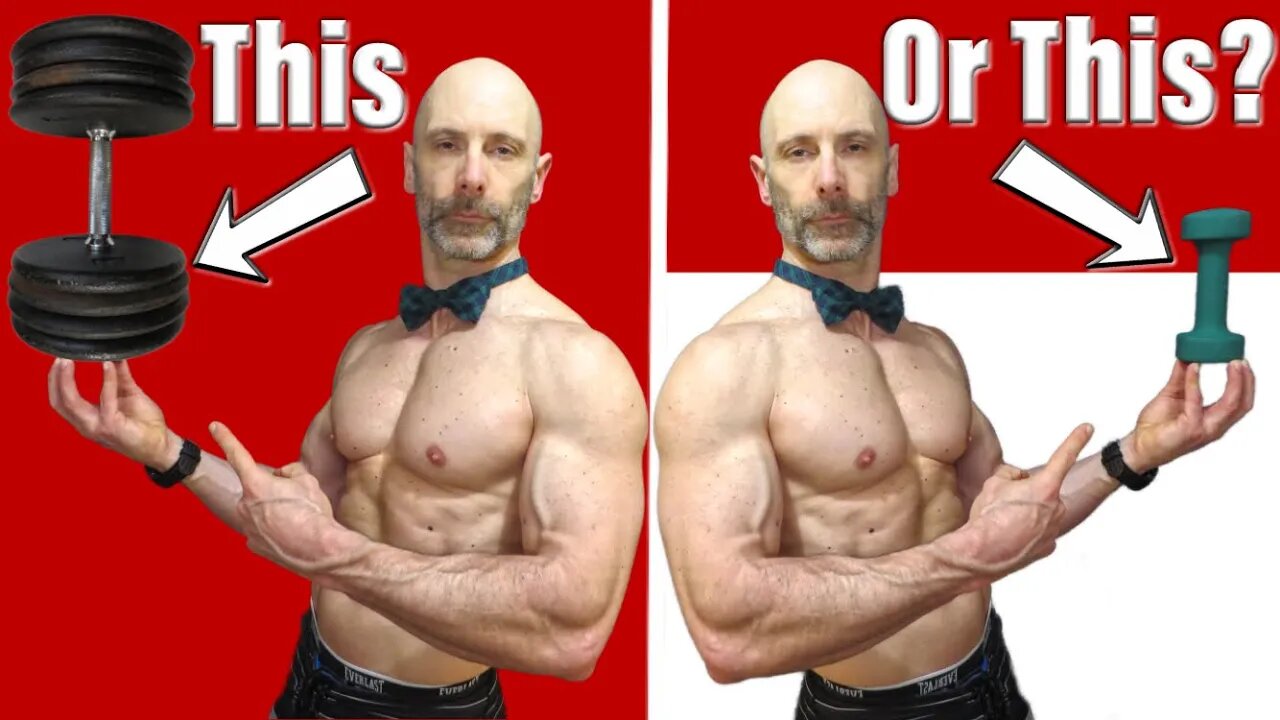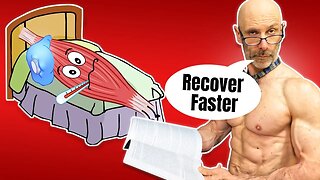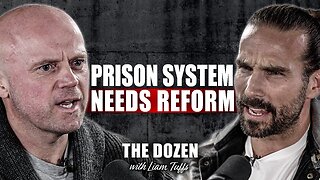Premium Only Content

Do I Need to Lift Heavy to Build Muscle?(Higher Reps Isn’t the Answer)
Do I need to lift heavy to build muscle (high reps isn’t the answer)
The first thing we need to establish when discussing if we need to use heavy weight to build muscle is; what is heavy? Because no matter how heavy you lift, I suspect it would be considered lightweight to someone like Hafthor Bjornsson, the current world record holder for the deadlift. Which is over 1100 pounds.
What is considered heavy or light is very individual, which is why we connect it to the number of repetitions you can do with a given weight until failure.
1 to 5 reps are considered heavy and are very good at developing neuromuscular strength. 6 to 12 reps are considered the muscle building or hypertrophy range, with 13 to 20 reps or higher being considered best for developing muscular endurance. This last group would be regarded as lightweight.
If you are interested in losing body fat and adding muscle, please email me at 1shark1bite@gmail.com for information on my personal training services.
Facebook; https://www.facebook.com/Fit-and-50-548844435514900/
My Amazon page link; https://www.amazon.com/shop/fitand50
My Affiliate link to Lebert for their Equalizer bars and more; http://www.easywebautomation.com/app/?af=1679568 and use the discount code LFI20 you will receive 20 dollars off your purchase
I want to expand this definition to include isolation exercises, as you can build muscle with these movements using substantially less weight than you would with a compound exercise.
In a recent video, I mentioned how you could progress an exercise without increasing weight by changing the tempo. There was a meta-analysis done by Brad Schoenfeld and team that found muscle growth was similar if you did anywhere between a half-second rep, which is super fast, or an eight-second repetition, which is relatively slow.
An eight-second rep would be a four-second concentric and a four-second eccentric movement. While moving the weight slower is a good idea, I wouldn’t actually start timing my repetitions as it takes the focus away from feeling the muscle work which is another advantage of doing your repetitions at a slower pace; it helps you better establish the mind-muscle connection.
Slowing down the pace of our repetitions is one way we can progress our sets without adding more weight, and it’s important to note that if you want to use lighter weight to build muscle, you still have to use some form of progressive overload.
There are plenty of studies showing we can build muscle in the higher rep ranges without using heavy weights as long as we are pushing our muscles to technical failure. On the practical side, trying to do repetitions of over 30 makes it hard to push through to failure as you become exhausted before reaching it. I have found that 20 reps are a more practical upper end. So to continue to adding reps past this point isn’t the answer.
This is where using an isolation exercise before doing a compound movement comes in. Muscles like your chest and back are strong. To fully bring them to failure with a lighter weight, it’s advantageous to pre-exhaust them with an isolation exercise.
There are two ways you can do this. You can do 2 to 3 sets of an isolation exercise before doing a compound movement. As an example for the bench press, you could do a flye motion either with dumbbells, cables or bands.
The other way it can be done is a pre-exhaust superset where you go straight from the isolation exercise to the compound movement with no rest in between. For your back, you could do a straight arm pulldown before doing pull-ups or bend over rows.
There is another advantage to doing an isolation exercise first. It will ensure the larger muscle group gets fully worked in the compound movement. As compound exercises also work many smaller muscles, these can fatigue and fail before you have thoroughly exhausted the larger muscle. For example, your triceps could give out before your chest when doing bench press.
Now let’s talk about training legs; of course, you could pre-exhaust these too. But I would suggest unilateral training that immediately cuts the weight in half. My favourite unilateral exercise for legs is Bulgarian split squats. This exercise takes the load off your back, which for anyone who has back trouble is a huge advantage.
The next way we can progress our workouts without adding weight is to increase our training volume. The best way to do this isn’t to add another rep but to add another set to your exercise, and you need to be bringing these sets close to or too technical failure. At some point, you will need to add weight, but by then, it should feel a lot lighter.
To find out more ways to progress your workouts without increasing weight to help you stay injury-free, watch this video next.
-
 4:53
4:53
Fit and 50
1 year ago $0.07 earnedHow to Speed Up Muscle Recovery Over 50 (Recover Like a 20 yr old)
5424 -
 21:35
21:35
DeVory Darkins
3 days ago $8.88 earnedMitch McConnell TORCHED as Secretary of HHS is sworn in
33.3K108 -
 1:20:04
1:20:04
Tim Pool
4 days agoGame of Money
77.5K10 -
 2:21:11
2:21:11
Nerdrotic
13 hours ago $30.22 earnedDown the Rabbit Hole with Kurt Metzger | Forbidden Frontier #090
123K22 -
 2:41:13
2:41:13
vivafrei
18 hours agoEp. 251: Bogus Social Security Payments? DOGE Lawsduit W's! Maddow Defamation! & MORE! Viva & Barnes
246K273 -
 1:19:23
1:19:23
Josh Pate's College Football Show
11 hours ago $4.58 earnedBig Ten Program Rankings | What Is College Football? | Clemson Rage| Stadiums I Haven’t Experienced
66K1 -
 LIVE
LIVE
Vigilant News Network
16 hours agoBombshell Study Reveals Where the COVID Vaccine Deaths Are Hiding | Media Blackout
2,156 watching -
 1:17:59
1:17:59
Sarah Westall
12 hours agoDOGE: Crime & Hysteria bringing the Critics & the Fearful - Plus new CDC/Ukraine Crime w/ Dr Fleming
74.6K7 -
 45:39
45:39
Survive History
18 hours ago $10.41 earnedCould You Survive in the Shield Wall at the Battle of Hastings?
75.3K6 -
 1:50:28
1:50:28
TheDozenPodcast
17 hours agoViolence, Abuse, Jail, Reform: Michael Maisey
110K4